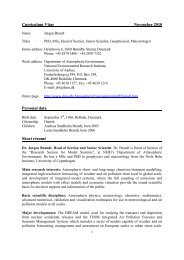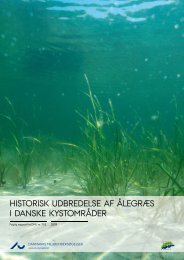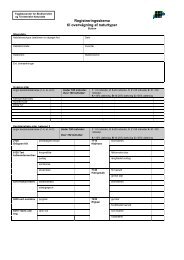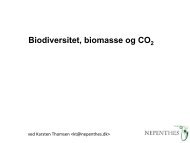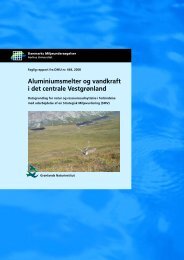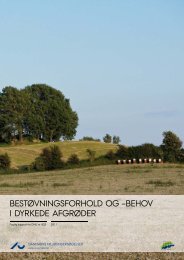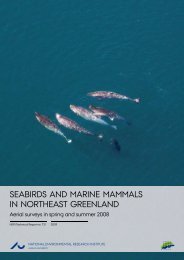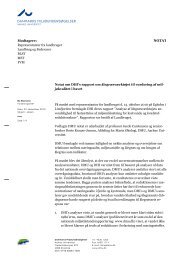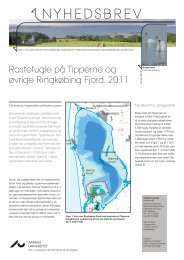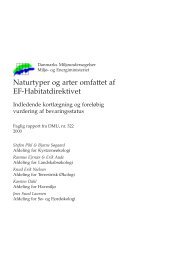Spatial distribution of emissions to air - the SPREAD model
Spatial distribution of emissions to air - the SPREAD model
Spatial distribution of emissions to air - the SPREAD model
You also want an ePaper? Increase the reach of your titles
YUMPU automatically turns print PDFs into web optimized ePapers that Google loves.
28<br />
on route network created as straight lines between <strong>the</strong> <strong>air</strong>ports. Emissions<br />
from <strong>the</strong> remaining routes are added <strong>to</strong> <strong>the</strong> nine major routes using<br />
<strong>the</strong> same <strong>distribution</strong>. The nine major routes accounts for 57 % <strong>of</strong> <strong>the</strong> <strong>to</strong>tal<br />
fuel consumption for domestic cruise in 2008. The remaining 43 % include<br />
o<strong>the</strong>r routes, mainly <strong>to</strong> Greenland and Faroe Islands and routes<br />
performed by private/taxi flights.<br />
The largest <strong>air</strong>port in Denmark is Copenhagen Airport, Kastrup (EKCH).<br />
In <strong>the</strong> national inven<strong>to</strong>ry EKCH is treated as a Large Point Source (LPS),<br />
both concerning LTO and cruise. In <strong>SPREAD</strong> domestic cruise from<br />
EKCH is treated as an area source and distributed on <strong>the</strong> route network,<br />
while <strong>emissions</strong> from LTO are located at <strong>the</strong> position <strong>of</strong> EKCH.<br />
The same background data are used for calculation <strong>of</strong> <strong>emissions</strong> from<br />
LTO. Emissions from domestic and international LTO at Copenhagen<br />
Airport Kastrup are allocated on <strong>the</strong> site (point) included in <strong>the</strong> Danish<br />
inven<strong>to</strong>ry system. The remaining <strong>emissions</strong> from LTO are distributed on<br />
<strong>the</strong> nine major <strong>air</strong>ports according <strong>to</strong> <strong>the</strong> <strong>air</strong>port areas given in KORT10<br />
by <strong>the</strong> National Survey and Cadastre. LTO for <strong>the</strong> 10 major <strong>air</strong>ports accounts<br />
for 82 % <strong>of</strong> <strong>the</strong> national fuel consumption for LTO in 2008.<br />
$JULFXOWXUH )RUHVWU\ ,QGXVWU\ +RXVHKROG JDUGHQLQJ<br />
The <strong>emissions</strong> from <strong>the</strong> national emission inven<strong>to</strong>ry for mobile sources<br />
in Forestry, Industry as well as Household and gardening are distributed<br />
according <strong>to</strong> land use maps in KORT10 by <strong>the</strong> National Survey and Cadastre.<br />
The category “low settlements” are used as <strong>distribution</strong> key for<br />
Household & gardening. Emissions from mobile sources in Agriculture<br />
are distributed on <strong>the</strong> Danish agricultural area from <strong>the</strong> field block map.<br />
5HVXOWV IRU PRELOH VRXUFHV<br />
Emissions <strong>of</strong> NOx from o<strong>the</strong>r mobile sources (excluding road traffic) are<br />
dominated by <strong>the</strong> major aviation and navigation routes and <strong>the</strong> railway<br />
network (Figure 3.6). Also <strong>the</strong> military exercise areas are clear on <strong>the</strong><br />
map. Only very few and relatively small areas have no <strong>emissions</strong> from<br />
o<strong>the</strong>r mobile sources. Emissions on <strong>the</strong> national sea terri<strong>to</strong>ry occur because<br />
<strong>emissions</strong> from navigation o<strong>the</strong>r than <strong>the</strong> major ferry routes are<br />
distributed evenly on <strong>the</strong> national sea area. On land <strong>emissions</strong> are allocated<br />
<strong>to</strong> areas <strong>of</strong> agriculture, forest, industry and low buildings, which<br />
by far cover <strong>the</strong> major part <strong>of</strong> <strong>the</strong> Danish land area.





